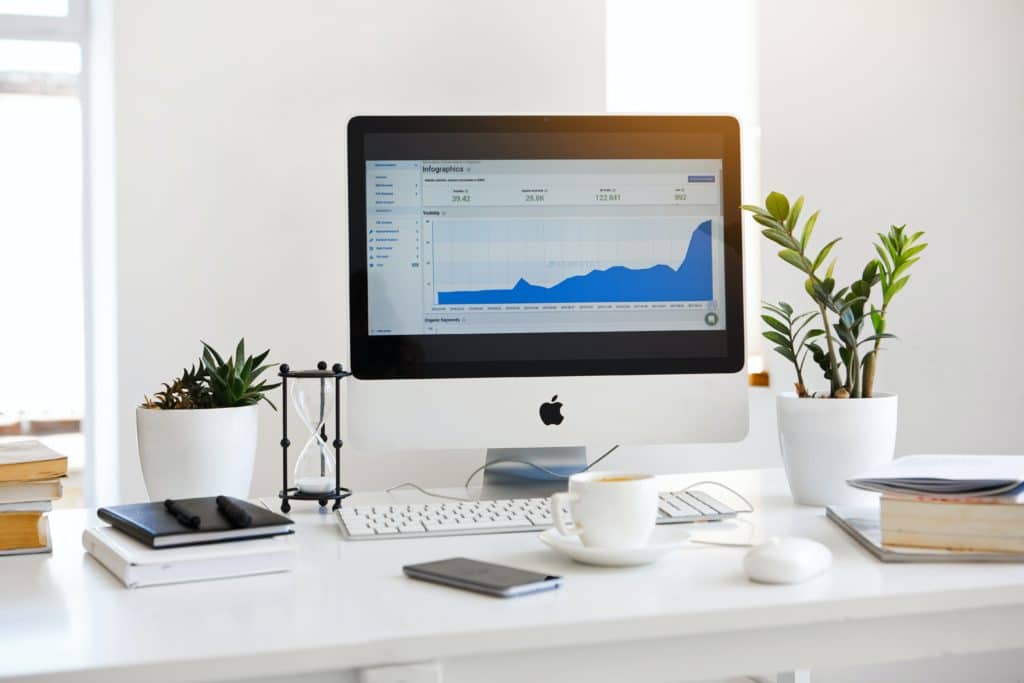Smarter decisions. Pinpointing problems. Driving up revenue. Whether you own a small business, agency, or consultant, you’re taking big actions every day.
So how do you break down the data behind your business to reach the right conclusions?
The more complex your business, the more difficult it is to surface insights that will improve your financial outlook. With advanced formulas, predictive models, and sophisticated algorithms, you can begin to simplify how your smartest business minds can process your company’s performance and impact growth.
Learn how business intelligence can be used by strategists across your organization to enhance the way you run your business.
Table of Contents
What is Business Intelligence?
Business Intelligence (BI) refers to tools and practices that translate data into actionable business insights. BI tools collect, store, and analyze large data sets, helping companies make high-level and tactical business decisions. These tools can present data through:
- Dashboards
- Cloud data services
- Data warehouses
- Data discovery tools
Who is Business Intelligence for?
Business intelligence tools are, technically speaking, available for any type of company from enterprises to small businesses. That said, BI tools are not necessarily the best option for smaller organizations unless they have the technical resources to implement and use it.
If you’re looking to get up and running in a short timeframe, BI tools can be complicated to set up. Some companies will pay development firms for on-premise deployment and training due to the complexity of BI platforms.
While some BI tools offer high customization, these tools can also be difficult for non-technical users. In large companies, business intelligence analysts go through the data in BI tools. Then work with in-house data scientists to analyze the gathered data.
Keep in mind BI software is often expensive. A license’s cost averages roughly $3,000 per year.
The Difference Between BI and Business Analytics
While the differences are up to debate for many working in big data, here’s what you need to know:
- Business intelligence looks at what happened in the past and how it happened. Often it looks at the big picture trends and patterns but does not consider the future.
- Business analytics look at current data to predict future trends.
In other words, BI tools focus on advancing current operations. Business analytics can help update your operations to improve your future work.
While you can use both in tandem to boost your current and future operations, business analytics with a real-time monitoring dashboard can serve the same role.
Business analytics tools like Cyfe are easier to get started. You can get up and running in three easy steps.
- Select a dashboard template.

2. Configure your data source whether it’s Google Analytics, QuickBooks, or other software.
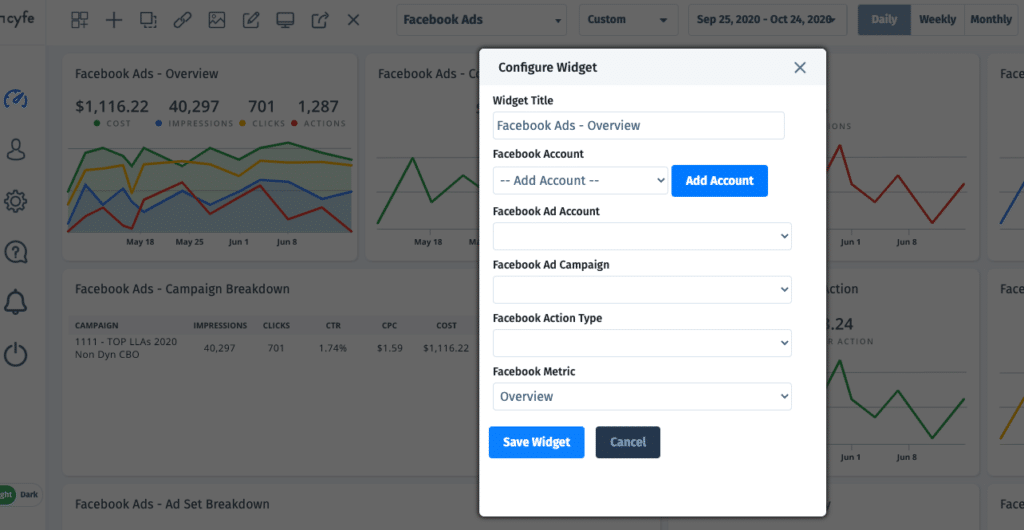
- Drag and drop to customize your dashboard.
Then use Cyfe’s dashboard to monitor and report on data in real-time.
Let’s say you own an eCommerce clothing brand. BI tools can reveal information such as:
- Your most popular item last season by looking at sales figures
- Where those customers live
- What eCommerce channel drove the most sales
Then you may decide to set up ad campaigns targeting specific geo-locations.
In this case, Business analytics with a real-time dashboard can help you:
- See what sites customers come from before landing on your site
- Review your most successful ad campaigns
- Monitor your eCommerce KPIs
After reviewing your business analytics, you may choose to reallocate your ad spend on specific networks or track data on a live A/B test.
Examples of BI
Here are a few more examples to illustrate how companies use business intelligence…
Amazon Analyzes Actions
Amazon uses big data to understand everything from where to keep inventory in specific warehouses to what customers buy in the same transaction. Using BI tools, Amazon can shorten shipping routes, provide personalized recommendations, and other great customer experiences.
Lowe’s Recovers Revenue
Lowe’s built out a data warehouse to help them look at lost revenue. Through BI tools they analyzed which stores were collecting delivery charges and which weren’t. Collections increased by $30 million the following year.
Seer Interactive Delivers Client Wins
Seer Interactive uses Traject Data SEO API to capture all the search terms their PPC clients’ potential customers use. With the API, they can capture low search volume keywords that provide a great ROI to their clients.
Tools for Business Intelligence
Now, let’s look at other popular business intelligence tools.
Tableau
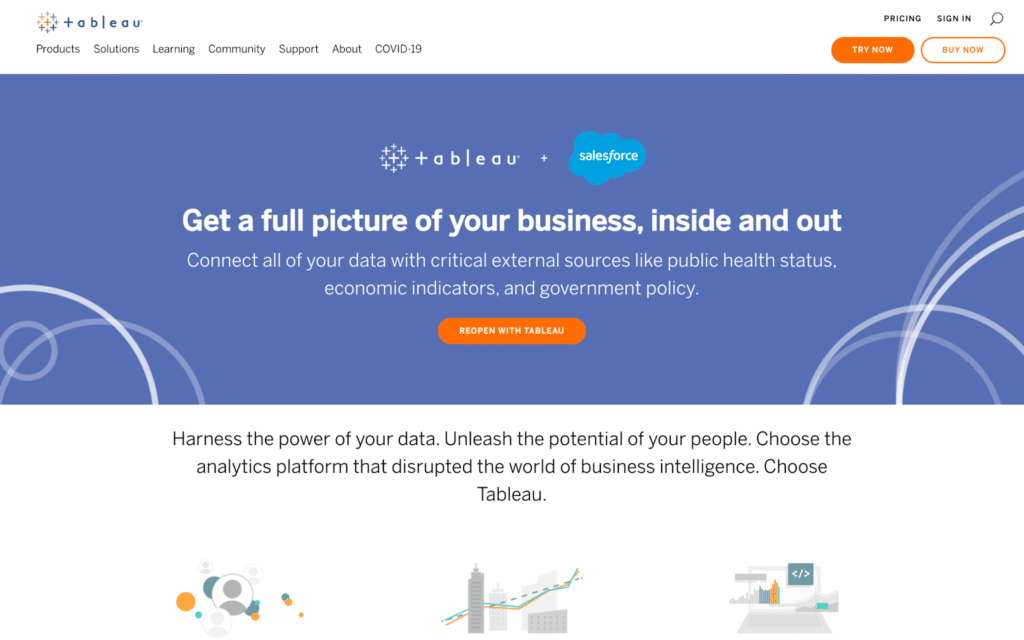
Tableau, owned by Salesforce is the largest business intelligence tool. Tableau integrates with over 250 applications so you can pull data from files like spreadsheets to larger databases, including AWS.
Tableau has a huge community so you can ask questions in forums or even get certified as an expert on their platform.
A few drawbacks to be aware of with Tableau:
- To fully utilize the software, you can expect a steep learning curve.
- Only admins can set up scheduled email notifications; other users would need to use custom Python code to create alerts based on specific parameters
- Prices start at $840 per year for a Tableau license.
Domo
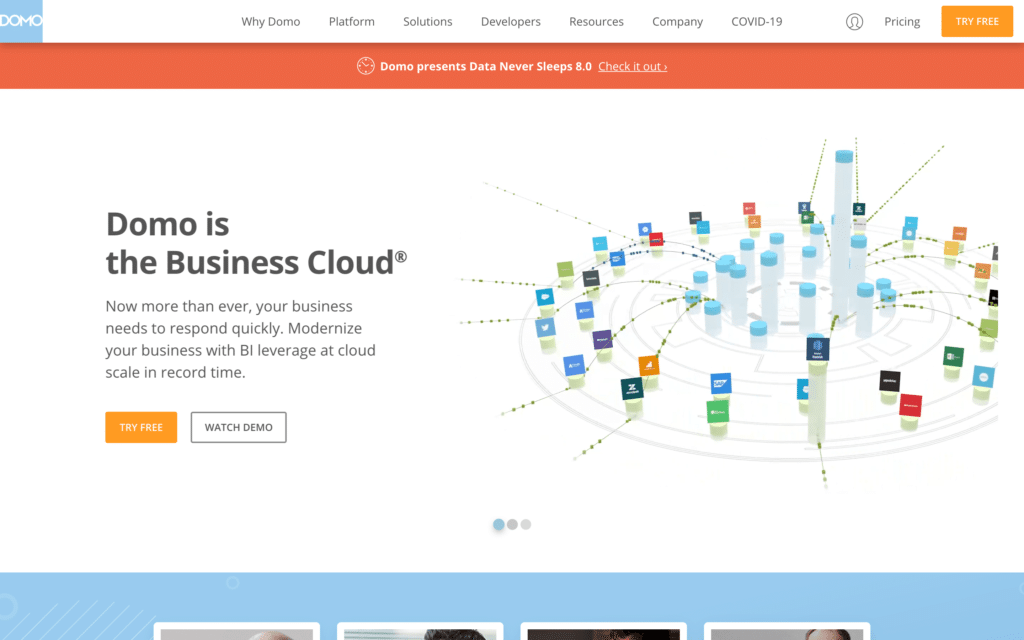
Domo touts how fast analytics can work within their cloud-based platform. “We maintain a sub-second average query response time,” said CEO and founder Josh James.
Along with their fast query time, Domo users can collaborate through messages and annotations on any data visualizations.
Like other BI tools, users can also set up benchmark alerts and other notifications.
A few factors to consider with Domo:
- On-prem deployment is not available
- Users report limited pivot table functionality
- Platform does not provide dashboard access to non-users
Looker
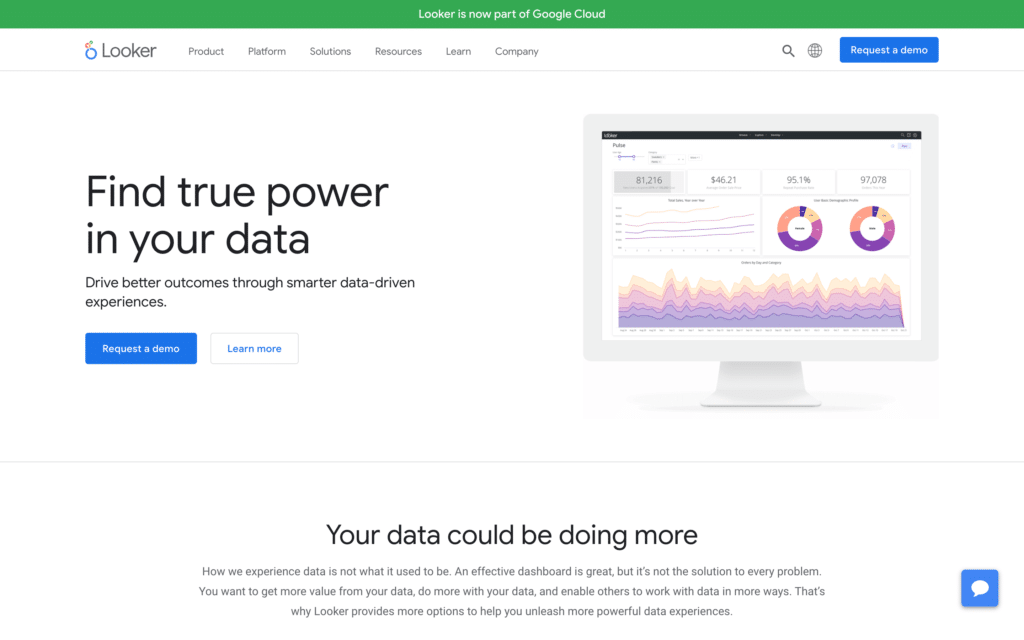
Looker is a browser-based BI platform. Meaning the installation and maintenance support compared to an on-premise solution is far less. This Google-owned tool lets you share data via links instead of files and has extensive help resources to get you using Looker.
However, some Looker users report:
- difficulty customizing Looker templates
- slow application loading times
- less functionality using the mobile app
Summing It Up
BI tools can help break down big data, but these tools can have a steep learning curve or require a ton of upfront investment to deploy. Working at a large scale and hiring people with technical skills to act as power users can pay off.
More lightweight business analytic solutions can help make smarter decisions for many agencies, small business owners, and other entrepreneurs. Try out Cyfe to help you review:
- Current or past business results.
- Establish benchmarks to continually improve.
- Receive real-time alerts when there are clear changes in your most important metrics.
